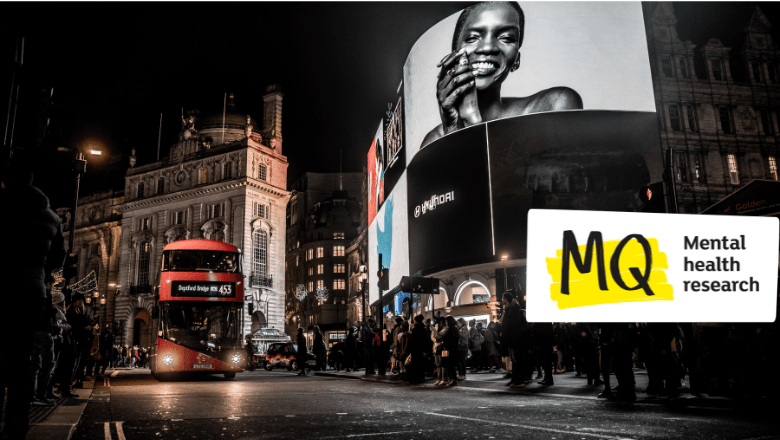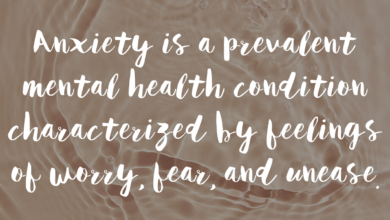Adding to the Problem: Advertising and Mental Health

Advertising can have a powerful effect on our mental well-being, research shows. MQ writer Juliette Burton explains why advertising can add to the problem of mental ill health and add to the solutions too.
Advertising is the wallpaper of our lives. It surrounds us whether we like it or not. TV and in magazines, on billboards and bus stops, popping up on our social media feeds as we scroll, interrupting our favourite YouTube channels or podcast subscriptions, sponsoring our favourite sports team or endorsed by our favourite content creator, no matter where we turn, we are subject to advertisements. Be it in print, digital, TV, radio, sponsorship or signs, advertising surrounds us.
And their effects on our mental well-being can be significant.
Each Body Ready
Back in 2015 there was an ad campaign that caused a stir. The advert was banned, but not before the company publicly body shamed people and then publicly began mental health shaming those standing up to them, myself included.
Having been sectioned under the mental health act due to life threatening anorexia, hospitalised for bulimia and for suicide attempts due to the powerlessness of binge eating disorder, adverts that portray bodies as ‘not good enough’ are particularly harmful, in my opinion and experience. I find they add to the external voices we can internalise particularly during formative years, telling us we are not enough and need to change to be seen as worthy in society.
At the time, the CEO of the company involved in this particular ad campaign and I got into an exchange on Twitter. The company’s account tweeted that “we are a nation of sympathisers for fatties #doesn’thelpanyone” and “why make your insecurities our problem”.
When I wrote publicly about my mental health history for the BBC and other news sights in response, the CEO of the company said on Twitter “so she does have mental health conditions” followed by laughing emojis and alien emojis.
I have no shame about my mental illnesses. I am open about them because I see nothing to fear except stigma which is born of ignorance. To change society, I must be unapologetic in my openness about my history of eating disorders which themselves were born from problems in society that need to be addressed: patriarchy, inequality, repression of anger, silencing of valid voices that challenge the status quo, good girl syndrome, attachment disorder, the illusion of perfection, the illusion of control and much more. Change will never occur if we accept things as they are.
Encouraging low self-esteem is a tactic some companies use, as do schoolyard bullies. A therapist once suggested to me that putting someone else down to elevate one’s own status is an indication that the bully themselves is in need of help.. This form of commercialisation seems, to me, to hint at hiding something. Bullying is a form of control and a refusal to embrace vulnerability or change.
Don’t Feed The Trolls
When I was in this Twitter debacle, I approached the trolls that came at me, and there were thousands, as I would anyone who belittled my mental illness – with compassion. Their attitudes came from ignorance, as far as I was concerned. And the only way to change that is through education.
That being said, this wasn’t easy. The trolls at first told me to be silent because I was “fat, ugly, useless” then the next wave that came accused me of “first world feminism” as if I should not call for change because others have it worse. The next wave came for my mental health conditions, to make fun of those with mental illnesses. And finally, they started to call into question how much I myself could trust my own thoughts, considering where they have taken me before.
The difference between my mental illness thoughts and my own is the colour, texture, fabric of their make-up. I know my more passionate beliefs in change are my own because they exist between the oppressive thoughts of body dysmorphia or eating disorders or suicidal thoughts. Those are a painful response to the inequality I’ve experienced. My call for change is calling out the status quo which exists still to oppress.
This experience from 2015 remains with me and makes me wonder more about the wider impacts of the advertising we are still bombarded with every day.
Positive and Negative
Of course, what is being advertised matters greatly as well as how it is presented. Public health campaigns, important legislative updates and charities (including MQ) all rely on advertising to share information to large audiences.
Research has shown that certain types of advertising can improve understanding of mental health and mental illness. A study showed that the method of telling stories or ‘narrative advertising’ was more effective than telling people about a mental illness or ‘argument advertising’ when it comes to increasing understanding of clinical depression. Telling stories about depression, specifically, meant people were more sympathetic towards people with depression, increased willingness to get professional help if they were experiencing symptoms and were better at informing people to recognise symptoms of depression in friends and family.
So adverts can be used in positive ways to improve peoples understanding and sympathy of mental illness. But as my own experience shows advertising can have a negative effect on our wellbeing.
Social media regulations continue to be debated in general as well as the adverts that feature therein. In this article, MQ highlighted a report on the effects social media can have on children and young people’s mental well-being. Research has shown that people aged between 12 and 15 who spent more than three hours per day on social media are at greater risk of experiencing poor mental health compared to those who spent less time online. However research also suggests that social media has both positive and negative effects, with this particular research paper showing no evidence that global use of social media is associated with widespread psychological harm.
Ethics of Advertising
Questionable motivations of brands and companies and the intent behind their adverts has led many companies to be criticised for their advertising choices. Ethically, it is important to consider questions such as does advertising increase spending by generating desire for products consumers do not need and cannot afford? One study proved that advertising “fostering unending desires” negatively impacts happiness and is actively harmful to our society. Another study showed that advertising and consumerism is harmful to childhood well-being.
However, well-being itself often is advertised. Research argues that when it comes to well-being marketing, it’s vital that companies consider the ethics involved and that well-being companies in particular need to focus on doing good or causing good to be done. Ultimately, kindness counts.
Sexuality and Inequality
Years ago there was a dominance of sexuality in adverts. In the childhood memories of many 30 or 40-somethings is the macho male stereotypes and the overly sexualised female – usually a woman, or an overly sexualised cartoon rabbit advertising the sexual satisfaction of confectionary or a heroic James Bond-like male figure delivering chocolate.
In 2018 a study showed that sexism in adverts needed to change. The research stated that brands could benefit from portraying both women and men proportionately, respectfully and realistically. Inequality is not the way forward, science suggests.
Embrace Change
Eight years on from when the Beach Body Ready debacle raised concerns over not only body shaming images but the mental health shaming of the company involvedhave things changed?
Some companies are making a conscious effort to be a part of the call for change. Since the 1971 Coca Cola advert inviting the world to sing in perfect harmony, some companies have noticed that inclusivity leads to mass appeal. By focusing on our similarities and celebrating our differences, companies can unite us beyond social labels.
Etsy celebrated individuality with campaigns like ‘Gift Like You Mean It’ featuring same sex couples and personalised necklaces spelling out the names of diverse people.
Famous brands like Gilette have switched to including trans experiences in their exploration of the right of passage of a boy’s first shave. Nail products from Essie that celebrate men and non-binary people expressing themselves through beauty brands are pairing up with public figures like Jonathan Van Ness of Queer Eye, Even brands like Victoria’s Secret, previously criticised for encouraging impossible beauty standards, have started to change towards more inclusive campaigns.
And to bring us back to mental health, some brands are using mental health experiences to appeal to our common humanity. Google Pixel celebrated those who have lived through suicidal thoughts in a recent advert.
It’s important for brands to celebrate both commonality and individuality, as opposed to ‘othering’ those who are different. Disability is still underrepresented in advertising. Inclusive design consultancy group Open Inclusion exist to help brands consult their panel leads about the difficult questions brands need to ask to become truly inclusive and not harmful or offensive. I’m honoured to be their mental health panel lead in the UK.
Advertising is the wallpaper of our lives. We internalise it. It becomes a part of us and our awareness of who we are and what the rules of the world we live in are. What a wonderful world it could be if goodness, kindness and genuine care and compassion informed it, perhaps with a bit of informed humour.
If you want to know more about recovery from eating disorders in our modern society, you can read more about a personal story here.
Source link
#Adding #Problem #Advertising #Mental #Health

